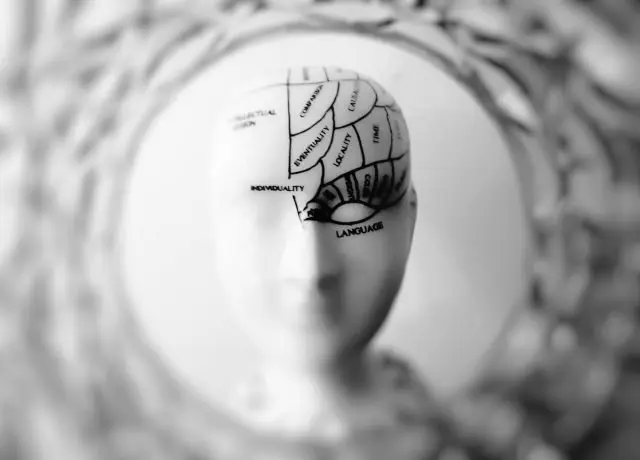
Schizophrenia is one of the most severe mental health conditions that exists. The symptoms of the illness often cause those who suffer from it to lose touch with reality.
For both the individual, and those around them, Schizophrenia is a distressing illness. But thankfully, great strides have been made in recent decades in terms of treatment for Schizophrenia.
In this article, we take a look at the interesting and long history of Schizophrenia.

Origins
The term “Schizophrenia” is believed to have been devised by Eugen Bleuler – a Swiss psychiatrist – in 1908.
The term was initially used to describe a loss of function between memory, personality, thoughts and perception.
Prior to this time, individuals with what is now called Schizophrenia would have been considered to be psychotic, and diagnosed with a condition called “dementia praecox”.
About Dementia Praecox
Dementia praecox is no longer used in the psychiatric world, having now been replaced by Schizophrenia.
The two are similar, with Schizophrenia becoming a cluster of symptoms associated with psychosis.
Dementia praecox recognised the psychosis involved, though placed more emphasis on the cognitive disintegration caused by symptoms.
Schizophrenia essentially took over from Dementia praecox, and has remained a part of psychiatry ever since.
Dementia praecox was largely diagnosed throughout the 19th century. Prior to this, there appears to be little in the way of diagnosis.
It is likely someone with modern-day Schizophrenia would simply be considered to be suffering from “madness” many years ago.
Stigmatised
Schizophrenia sufferers have been stigmatised for years. Several misconceptions exist based on the condition. In fact, we have an article that busts the various myths with Schizophrenia which you can read here.
For instance, many people believe Schizophrenia features split personalities – something that isn’t true.
During the horrific rule in Germany in the 1940s, people with Schizophrenia were either routinely murdered or sterilized, linked in part to Eugenics.
People with mental disorders were another victim of the abhorrent regime seen at the time.
Even in the modern day, a stigma exists with Schizophrenia. Hopefully though this will continue to lessen over the next few years.
Breakthrough in treatment
Thankfully, a breakthrough in treating Schizophrenia arrived in the years following the Second World War, as antipsychotics were discovered.
Prior to this, a range of treatments were tried with little success. “Fever therapy”, electroconvulsive treatment, lobotomies and gas therapies were all efforts made.
In the 1950s, Chlorpromazine was introduced – providing significant relief in severity of symptoms for many Schizophrenia sufferers. Chlorpromazine was routinely used to treat Schizophrenia, and was followed up by a few more antipsychotics over the following years.
In the following decades, more and more antipsychotics were introduced, which helped provide more help for Schizophrenia treatment.
More and more people were able to receive help for Schizophrenia, though confinement in mental hospitals and asylums was still common.
A second group of antipsychotics, called “atypical” antipsychotics, have also been widely introduced in recent years.
These second-generation antipsychotics have more of a favourable side effect profile, and have proven to be more popular with patients.
Deinstitutionalization
Another boost in helping sufferers of Schizophrenia has appeared in the form of the process of deinstitutionalisation.
This is the process of trying to eliminate long-stay psychiatric hospitals from mainstream use. This has been seen in the United Kingdom over the last few decades.
Instead, more and more psychiatric treatment has been taking place within the community – giving more control to those suffering from mental illnesses.
Of course, in instances where hospitalisation is required for safety purposes, secure hospitals still exist.
Modern changes
Previously, the DSM categorised different types of Schizophrenia. These were Paranoid, Hebephrenic, Differentiated, Residual and Catatonic sub-types.
But the DSM eventually removed these subtypes, bringing Schizophrenia illnesses into one banner. The ICD continue however to use the sub-types.
There is some controversy however regarding Schizophrenia, with some suggestions positing that Schizophrenia isn’t a condition.
Some have suggested people with Schizophrenia are intelligent, creative and sensitive individuals who merely appear to be crazy when confronted with what is without doubt, a mad world.
Summary
Thankfully, there is growing understanding in the wider public regarding Schizophrenia. Great strides have been made in order to understand the illness, though there is still much to be done.
Now though, recovery is certainly possible, and at the least, symptoms are being controlled more.
See Also
- Schizophrenic Spectrum Homepage
- What is the Difference Between Schizophrenia and Schizoaffective Disorder?
- What is the Difference Between Mania and Hypomania?
- Everything You Need to Know About Antipsychotics
Disclaimer
This website should be used purely for informational purposes, and does not intend to, nor should it ever, be used as a replacement for professional medical advice.
We strive to keep all of our pages updated, and ensure that our website is full of factual and in-depth information. However, we encourage you to browse this website with care.
As a reminder, this website and all content within it cannot and should not replace the advice of a trained medical professional. You can read our full disclaimer at this link.
Helplines
If you are struggling with your mental health, help is available. With the right support and treatment, you can make a recovery. For information on helplines, or if you are in a state of crisis, please visit our crisis page by clicking on the relevant link for your geographical location (United Kingdom), (United States), (International). You can also see how to get mental health treatment and the process involved by clicking this link.



























